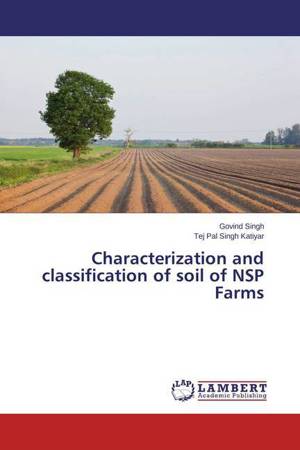
- Afhalen na 1 uur in een winkel met voorraad
- Gratis thuislevering in België vanaf € 30
- Ruim aanbod met 7 miljoen producten
- Afhalen na 1 uur in een winkel met voorraad
- Gratis thuislevering in België vanaf € 30
- Ruim aanbod met 7 miljoen producten
Zoeken
Characterization and classification of soil of NSP Farms
Govind Singh, Tej Pal Singh Katiyar
Paperback | Engels
€ 61,45
+ 122 punten
Omschrijving
This work was carried out in the National Seed Project farm soils in ND university of Agriculture and Technology Kumarganj, Faizabad UP, India. The soils of all the farm units I to V were characterized as saline-sodic in nature with low in organic carbon content, medium to high in CEC and high in base saturation, ESP and exchangeable Na+. The available N, P and Fe were low while K, S, Zn, Mn and Cu were medium in category Soil taxonomic classification of soils of unit I and V were classified in categories order, sub-order, great-group, sub-group and family were found Alfisols, Ustalfs, Natraustalf, Typic Natraustalf and Fine Mixed Hyperthermic while the soils of unit II, III and IV as Alfisols, Ustalfs, Argiustalf, Typic Argiustalf and Fine Mixed Hyperthermic respectively. Based on soil properties and management practices the soils of all the farm units of NSP farms have been classified in class II land use capability classification with sub-class IIs. The restriction in soil use was because of limitations of low organic carbon and presence of which resulted in poor permeability and imperfect drainage. This work is mainly useful for students, Researchers and agricultural planners.
Specificaties
Betrokkenen
- Auteur(s):
- Uitgeverij:
Inhoud
- Aantal bladzijden:
- 144
- Taal:
- Engels
Eigenschappen
- Productcode (EAN):
- 9783659764288
- Verschijningsdatum:
- 29/07/2015
- Uitvoering:
- Paperback
- Afmetingen:
- 150 mm x 220 mm
- Gewicht:
- 222 g

Alleen bij Standaard Boekhandel
+ 122 punten op je klantenkaart van Standaard Boekhandel
Beoordelingen
We publiceren alleen reviews die voldoen aan de voorwaarden voor reviews. Bekijk onze voorwaarden voor reviews.











